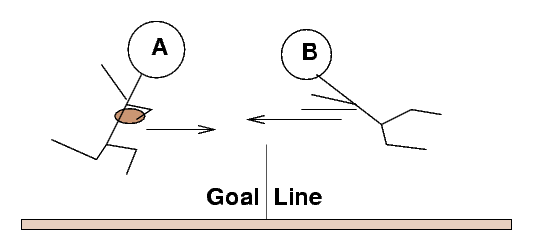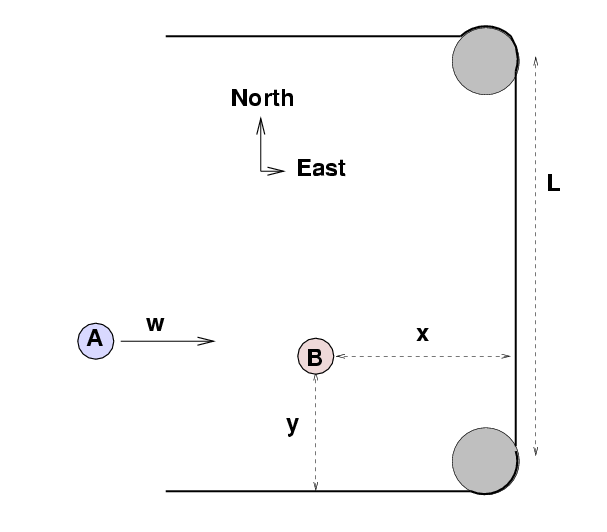
 Copyright © Michael Richmond.
This work is licensed under a Creative Commons License.
Copyright © Michael Richmond.
This work is licensed under a Creative Commons License.

Two objects smash into each other. What happens afterwards? And how do you figure it out?
That's a very general description. The method of attack will depend on the details of the situation. General rules to keep in mind are:
Let's do some examples.

Football players Alex, mA = 100 kg and vA = 5.6 m/s, and Bob, mB = 89 kg, vB = 6.2 m/s collide in mid-air at the peak of their leaps. Bob grabs Alex and prepares to wrestle him to the ground.

A block of mass M = 4 kg slides at speed v = 5 m/s across a frictionless floor. It collides with a motionless pendulum of length L = 1 m and mass m = 10 kg. The block goes sliding backwards at speed w while the pendulum swings up to a maximum angle theta. The collision is elastic.
It's an easy problem if you know the speed w

Fast Eddie considers his next pool shot. He needs to strike ball A so that it collides with ball B and sends B into the pocket at the southeastern corner of the table. Ball B is currently a distance x = 43.3 cm and y = 25 cm away from that pocket. Eddie fires ball A at an initial speed of w = 3 m/s; it knocks ball B straight into the pocket and heads off with a final speed z = 1.5 m/s.
 Copyright © Michael Richmond.
This work is licensed under a Creative Commons License.
Copyright © Michael Richmond.
This work is licensed under a Creative Commons License.